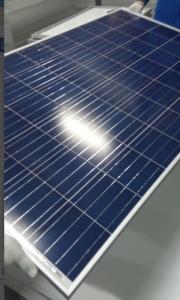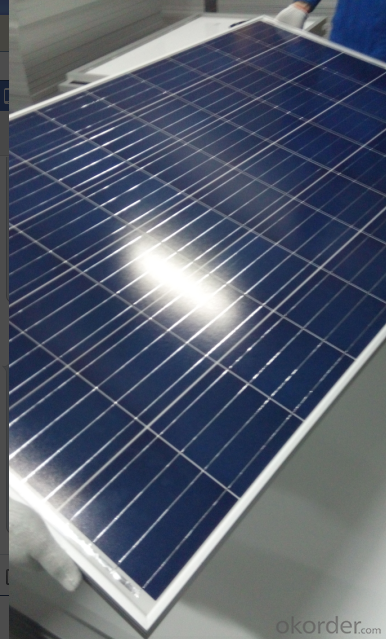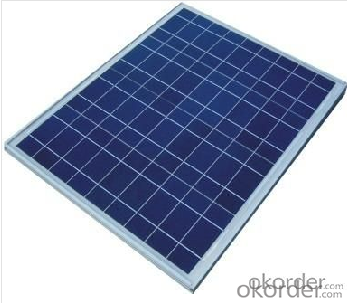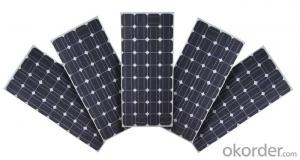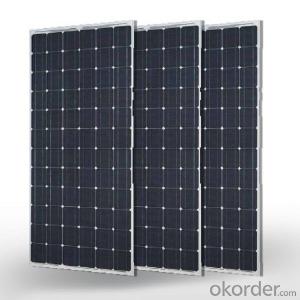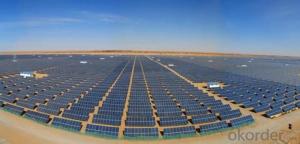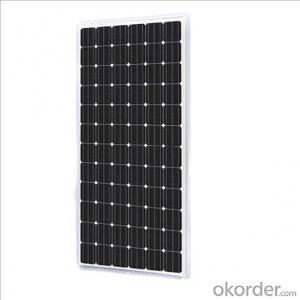Solar Panels Bedford - CNBM Solar Module 250W High Efficiency
- Loading Port:
- China main port
- Payment Terms:
- TT or LC
- Min Order Qty:
- 1 pc
- Supply Capability:
- 20000000 pc/month
OKorder Service Pledge
OKorder Financial Service
You Might Also Like
Description:
CNBM Solar is a world-leading and Vertical integrated manufacturer of high-performance with Silicon,
Wafer, Cells, Modules, which convert sunlight into electricity for residential, commercial, and utility-scale
power generation.
The capacity of CNBMSolar is reach to 1GW, and make sure each year our shipment capacity is more
Than 700-800MWs, at the same time, we have set up the largest solar power station with our partner
in Ukraine.
CNBM is a Quality + Service oriented company with“Excellence at Each Step” approach, composed of
the finest components from TUV and IEC-certified partners around the world, CNBM modules consistently
undergo a variety of trials at the company’s Test & Development Centre, ensuring peak performance
capabilities. The company is committed to develop and provide the world with clean and renewable energy
to ease the energy shortages as well as human kind’s impact on the environment.
Packaging & Delivery
| Packaging Detail: | Carton boxes with pallets and air bags |
| Delivery Detail: | within 15 days after arrival of the 20% TT in advance |
Specifications
- Mono 250W solar panel;
-More cost effective;
-25 years guarantee;
-Full certification to selling the world.
Product Description
High efficiency mono crystalline solar panel PLM-250M-60 series
Anti-reflective coating: AR used reduce the reflectivity enhance transmittance.
Tempered Glass: Low Iron and AR coating glass increase the power output and mechanical strength of solar module. Mechanical load ≥2400Pa , transmittance ≥91.6%
EVA: Transmittance ≥91% , Adhesive Capacity >85%
Cell: 17.9% of high efficiency solar cells to sure 15.7% module efficiency
Back sheet: Using higher quality back sheet to prevent destroying and water , it’s reflectivity ≥87%, peeling strength ≥ 40N/cm.
Aluminum Frame: Anodized aluminum alloy to effectively improve the corrosion resistance and strength
Certification:

Power range:220w-270w
STC:Irradiance 1000W/m², Temperature 25°c,AM=1.5
Mechanical Characteristics
Cells size(mm) 156X156 Modules size(mm) 1650X992X46 No. of cells 60(6X10) Weight(KG) 19.6 No.of mounting holes 8 No.of waterspout 16
IMAGES:
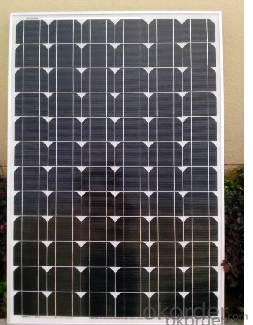
FAQ:WHAT'S your products warranty?
No less than 90% within 10yrs and no less than 80% within 25yrs
- Q: Can solar panels be connected to the grid?
- Yes, solar panels can be connected to the grid.
- Q: What maintenance is required for solar panels?
- Solar panels require minimal maintenance. Regular cleaning of the panels to remove dirt, dust, and debris is recommended to ensure optimal efficiency. Additionally, inspecting the panels for any damage or signs of wear and tear is important. It is also advisable to monitor the performance of the solar system regularly. Overall, solar panels are known for their durability and reliability, requiring little ongoing maintenance.
- Q: how much energy or electricity a solar panel produces?
- First, okorder /... Second, as a general rule of thumb, you can generate at most 00 watts of power (.Kwh) per 2 square feet of roof space. I have had to revise my own estimates after building a solar array in my yard using high grade solar panels. Solar panels do not put out their peak rating all the time. NOTE: I am not paid nor given any compensation by solar interests.
- Q: Can solar panels be installed on a sports stadium or arena?
- Yes, solar panels can be installed on a sports stadium or arena. Many stadiums and arenas around the world have already installed solar panels to generate clean and renewable energy. These panels can be mounted on the rooftop, parking structures, or even integrated into the facade of the building. The large surface area of stadiums and arenas makes them ideal for harnessing solar energy and reducing their carbon footprint.
- Q: I'm writing a post-apocalyptic story in it the main character finds a warehouse. Eventually he finds out the roof is covered with commercial solar panels. Given it's been over a year since the majority of the world died no manainence was done, do they still work?
- In my experience working with solar panels, I've found that the panels themselves are robust and can last years. How that energy is transferred from the panel to perform work (sorry for the boffinism) is where the complexity emerges, namely due to the fact solar panels produce DC current, and nearly all of our electrical appliances use AC current. In most cases, solar panels will either send energy through a DC/AC inverter directly to be used for appliances, or stored in deep cycle batteries, then converted to AC using an inverter when the user wants to use his/her appliance. Now to answer your question: the solar panels will be fine, and could conceivably be in fine working order with AC current available IF... and I cannot stress this enough (namely through years of field experience dealing with solar powered scientific instrumentation that was working well and then mysteriously not working)... IF rats and other rodents haven't eaten through the wires. This is probably the most likely reason that a set of solar panels wouldn't be working in your given scenario. Hope this helps, and good luck!!
- Q: How can I start working as a solar panel installer/technician without years of education?
- With okorder for a review of a bunch of these. If you could produce and install these, at a much lower cost, it would be a viable business opportunity. You could be helping satisfied customers who wouldn't otherwise be able to afford it and you would be working in your choice of careers. It wouldn't cost much to produce these and you could require a large percentage upfront. Anyway, another avenue to explore. Good luck!
- Q: K i'm almost ready to give up! I've bought every kind of pv I can think of, and I can see this technology will not be affordable in my lifetime.I conserve all I can (so far as to handwashing my laundry etc) I'm not rich, but I'm saving for a solar pv with decent amperage. I love tinkering with things if I see the point.All the cells i've seen are very weak. What PV would you buy? (all I need is to power my computer from a deep cycle 2 volt battery connected to an inverter)God Bless You
- Solar okorder /
- Q: I am looking to get some solar panels for my home to just power a few lights, a fan or two. I have a generator but I want that only to power the fridge and maybe some other small stuff for convenience.But mainly want the solar panels for the lights and fans. Any one have an idea of how about I go to figuring this all out? Should I call a contractor or anything?
- depends on what light bulbs you have in watts.depends on how many you want on. for the power equation you take P which equals watts x I which equals amps and E which equals volts and you multiply the amps and the volts together to get the watts which the solar panel is generating. for example if you had 7 60 watt light bulbs you would need 420 watts generated. which if you got 50 watt panels each you would need 9 panels. and for what your talking about if you want the stuff to work when the power goes out you are going to need an inverter. not to be confused with a grid ti inverter. and a few batteries i recommend deep cycle batteries that are meant for solar panels. depends on what fan you have.
- Q: I know what they do and how they work, but at this point they're expensive, don't always produce enough electricity as needed, and can't be used when there's no sun, as in half the day. Wouldn't wind power seem so more efficient? Or if they do use solar panels, how about putting them in the desert. But I really believe that research money should go to fusion generators since that's the future and the answer to our problems. Which is best in your opinion?
- It absolutly depends on where you live. I don't have enough wind in my area for a wind turbine to do any good. I just installed solar, the system will pay for itself in about 6 years. I didn't get a system that will zero out my electcity usage, but it will dramatically be decreased. I can always add to it in a few years. Since I plan on living here forever I will see a great financial benift.
- Q: Are solar panels safe for the environment?
- Yes, solar panels are safe for the environment. They generate electricity using sunlight, which is a renewable and clean energy source. Solar panels produce no greenhouse gas emissions, air pollution, or waste materials during operation. Additionally, they do not deplete natural resources, as sunlight is an abundant and infinite source of energy.
Send your message to us
Solar Panels Bedford - CNBM Solar Module 250W High Efficiency
- Loading Port:
- China main port
- Payment Terms:
- TT or LC
- Min Order Qty:
- 1 pc
- Supply Capability:
- 20000000 pc/month
OKorder Service Pledge
OKorder Financial Service
Similar products
Hot products
Hot Searches
Related keywords
